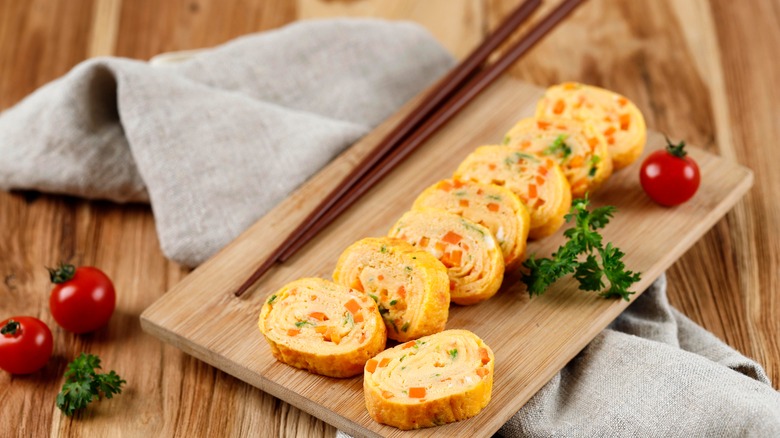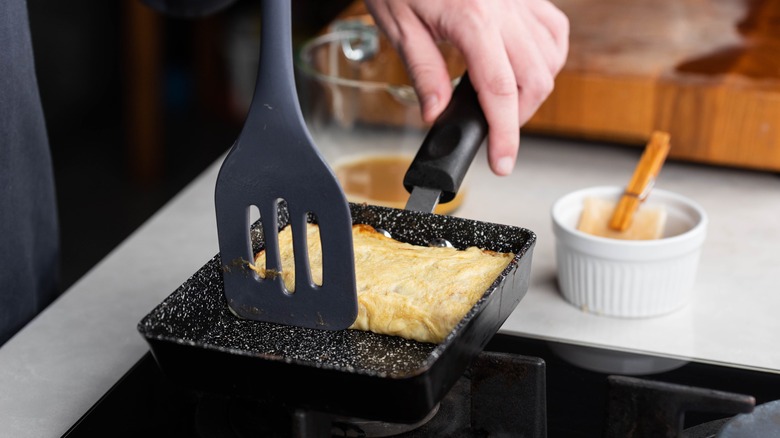How To Cook And Roll Your Eggs For The Best Korean Omelet
You might be tempted to prepare and present your usual omelet the way Koreans do, and honestly, who wouldn't? Gyeran mari or egg rolls are a fun way of serving this classic dish, whether it's with a simple omelet recipe or one with extra fixings like finely chopped vegetables and seaweed. Making it requires a deft hand and the right cooking techniques so the final product comes out perfectly rolled, soft, and fluffy. You must also use a non-stick pan so it will be easier to fold the thin layers of eggs over and over.
After beating the eggs with your preferred omelet ingredients, put the pan on medium-low heat and pour a thin layer of oil in it. Keep the liquid from pooling by using a folded paper towel to wipe the pan's surface of excess oil. Pour a thin layer of egg mixture, making sure it covers the bottom of the pan completely. Lower the heat and let the egg cook about 70% of the way, leaving it still slightly runny on top. This will help the layers stick together as you roll the thin omelet. This is also the stage where you can place shredded cheese or a sheet of dried roasted seaweed on top of the omelet.
Use a spatula or a pair of chopsticks to lift one side of the omelet gently and roll it over. Keep the folds tight as you roll the egg until you reach the opposite side.
Bulk up your gyeran mari
To make a thicker gyeran mari, stop rolling the omelet once you've almost reached the opposite side. Leave a small section unfurled and gently move the rolled egg back to one side of the pan. Use a brush to oil the exposed pan bottom lightly then pour another thin layer of egg mixture, making sure it overlaps with the unfurled part of the egg roll so both layers cook together. Let the new omelet cook over low heat then repeat the same gentle rolling motion with a spatula or chopsticks, starting from the already-folded section.
Once your egg roll has your desired girth, let each side cook for three to four minutes on low heat to create a soft-edged rectangle. After cooking, let it rest before slicing into one-inch sections.
Aside from the pleasing bite provided by the compressed rolls of fluffy eggs, gyeran mari is great as a backdrop for popular omelet fillings. It's very similar to tamagoyaki, which is the Japanese version of rolled omelet, although you may find most of the tamagoyaki sold in the US to be on the sweeter side thanks to their use of the Japanese broth dashi. Gyeran mari is generally savory. A common filling, aside from vegetables, would be chopped Spam. Whatever you choose to add to your rolled omelet, make sure they're finely chopped. Don't add too much filling to the beaten eggs, either or the omelet will be difficult to roll.

